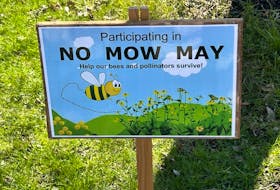STARRS POINT, N.S. — Within a year of his death in 1859, Charles R. Prescott’s estate in Starr’s Point was on the market.
On Sept. 8, 1860, the Halifax issue of The British Colonist carried an advertisement notifying the public the Prescott property would be sold at a public auction. The property was described as “one of the most desirable situations (in Nova Scotia) for a gentleman who may wish a country residence.” Following a detailed description of the house and outbuildings, the advertisement noted that the 100-acre property contained orchards with a great variety of “the choicest fruits in the province.”
If we fast-forward about 70 years, we find that after passing through a succession of owners, the house is in ruins. The house had been abandoned for several years when, around 1930, Charles Prescott’s great-granddaughter purchased it. Mary Allison Prescott restored the house and took up residence there (circa 1940) with her two sisters. When Mary Allison Prescott died in 1969, as per a previous agreement with her, the house was taken over by the Nova Scotia Museum.
Now, let’s go back again, to the 1940s, and relate what Sheffield Mills history buff Bob Keddy remembers about Prescott House. He was born in Starr’s Point and for nearly a decade through the 1940s, he lived across the road from Prescott House.
Keddy recalls that at that time “the view from the front of the house wasn’t as open and uncluttered as it is today due to a heavy growth of lilac bushes. The land wasn’t being farmed and most of the fruit orchards and the large flower gardens Prescott had planted were gone.”
Some of Keddy’s fondest memories are of his visits to the house when he was a boy.
“The Prescott sisters were living there at the time and for some reason, most of the kids were leery of them and the house. I wasn’t. I’d knock on the door and I’d be welcomed in. Once, one of the sisters was ill, and I was shown upstairs to her bedroom to visit with her.
“I remember that just inside the front entrance, on the left, was a buffet with a small fortune in all kinds of silverware pieces. The buffet was large and impressive but apparently my memory is fuzzy on this. I was told by the museum staff that this couldn’t be; that the house today is reproduced exactly as it was in Mary Allison Prescott’s time and there’s no record of a buffet at the front entrance.”
Keddy also recalls that at Christmas the Prescott sisters would make up baskets with fruit and candy and take them around the neighbourhood.
“No matter what the weather was like on Christmas Eve, they’d come around with their baskets.”
Interesting is some of the lore Keddy remembers about the Prescott House. He mentioned that the bricks used in constructing the house came from the area, “the red Cornwallis River clay was used.”
According to the lore, the bricks were made less than a kilometre from the house, at what local people called Allison Hill (“named after the Allisons, who owned the farm area around Willowbank before the Starrs did”). Either there once was a brick factory there or it was a one-time venture just to make the exterior walls of Prescott House.
Keddy said he believed the Allisons, an Irish family, were the first to settle in what eventually was to become known as Starr’s Point. Actually, the Mi’kmaq and then the Acadians were the first to occupy this area. Joseph Allison was from Ireland, as Keddy said; he left there in 1769, intending to settle in Pennsylvania. Allison and his family were shipwrecked off Nova Scotia. After being rescued, they landed in Horton where they settled. One of Joseph’s sons, James, became a prominent farmer and merchant in Cornwallis township and he eventually owned what today is Willowbank Farm.
There’s more to the Allison story, but that’s for another time. As for the Prescott House with its Cornwallis River clay brick façade, the building is recognized today as a fine example of British classical architecture, the type once popular in 17th and 18th century Great Britain. That it was neglected, almost to the point that it was unsalvageable, and once was used as a boarding house for farm workers, is difficult to believe, but that’s what happened.
- THEO GIESEN PHOTOS








